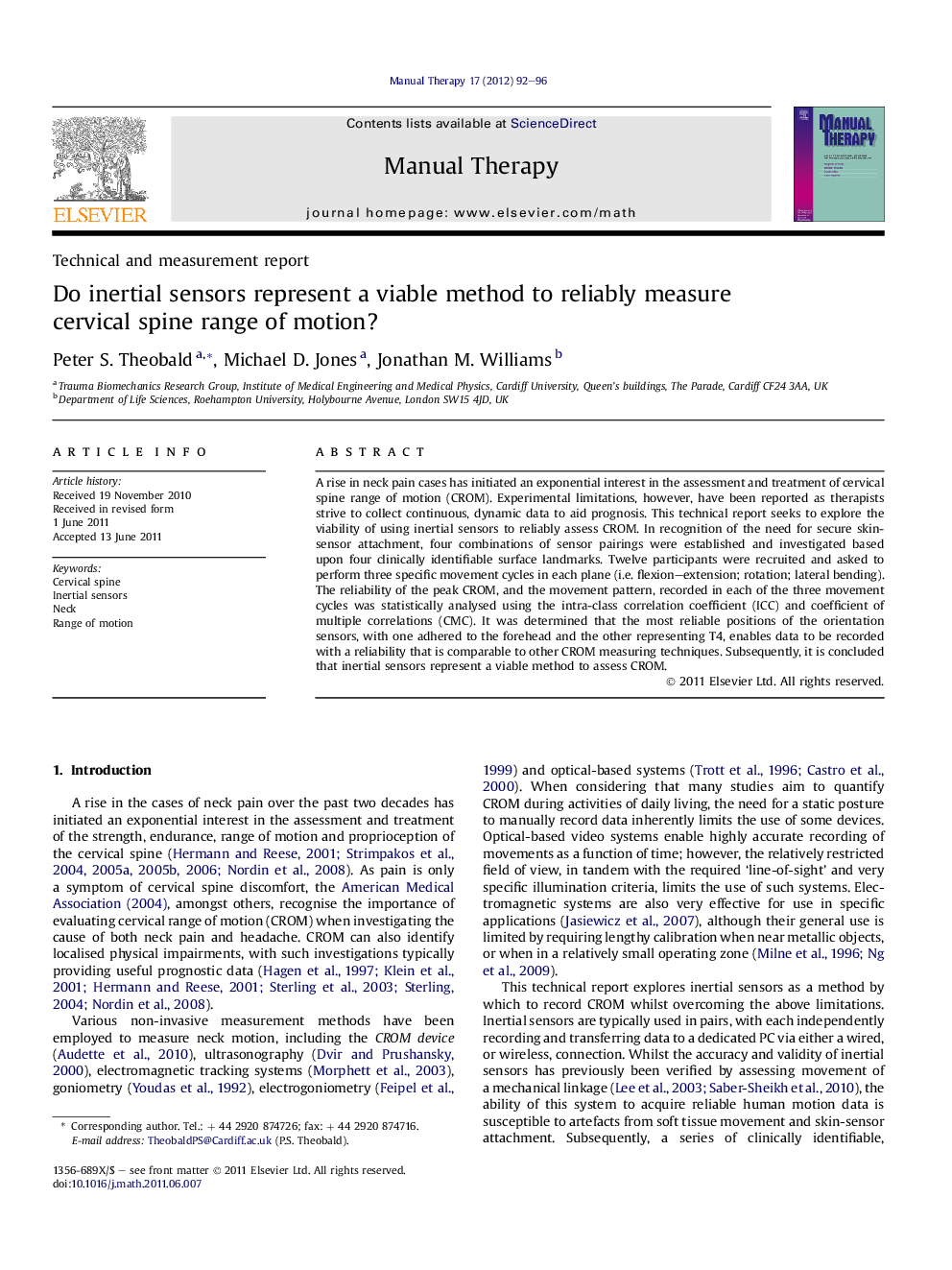| Article ID | Journal | Published Year | Pages | File Type |
|---|---|---|---|---|
| 2625220 | Manual Therapy | 2012 | 5 Pages |
A rise in neck pain cases has initiated an exponential interest in the assessment and treatment of cervical spine range of motion (CROM). Experimental limitations, however, have been reported as therapists strive to collect continuous, dynamic data to aid prognosis. This technical report seeks to explore the viability of using inertial sensors to reliably assess CROM. In recognition of the need for secure skin-sensor attachment, four combinations of sensor pairings were established and investigated based upon four clinically identifiable surface landmarks. Twelve participants were recruited and asked to perform three specific movement cycles in each plane (i.e. flexion–extension; rotation; lateral bending). The reliability of the peak CROM, and the movement pattern, recorded in each of the three movement cycles was statistically analysed using the intra-class correlation coefficient (ICC) and coefficient of multiple correlations (CMC). It was determined that the most reliable positions of the orientation sensors, with one adhered to the forehead and the other representing T4, enables data to be recorded with a reliability that is comparable to other CROM measuring techniques. Subsequently, it is concluded that inertial sensors represent a viable method to assess CROM.
